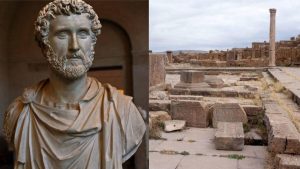Quiz: How Well Do You Know The Colonial Era Of America?
The history of the United States of America dates back several hundred years, as colonists fled their home countries to escape religious persecution. When the first settlers arrived, they had no idea what would come of their journey, but they eventually began the foundation for America as a country.
A lot happened leading up to the American Revolution, including the formation of the original 13 colonies, the Salem Witch Trials, and the very first Thanksgiving celebration. Any American should be able to ace this U.S. colonial era quiz.
What was the name of the ship that brought the colonists to Plymouth Rock?
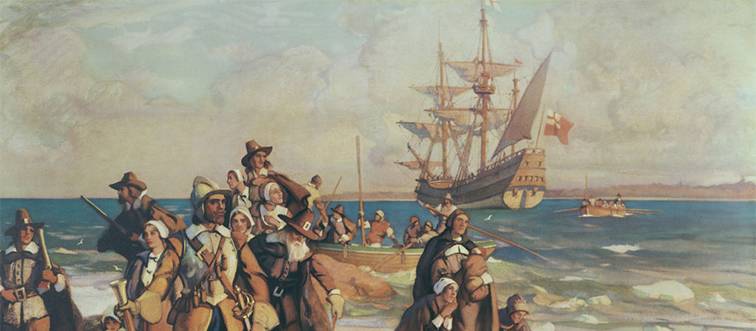
A. Mayflower
B. Niña
C. Pinta
D. Santa María
Answer: Mayflower
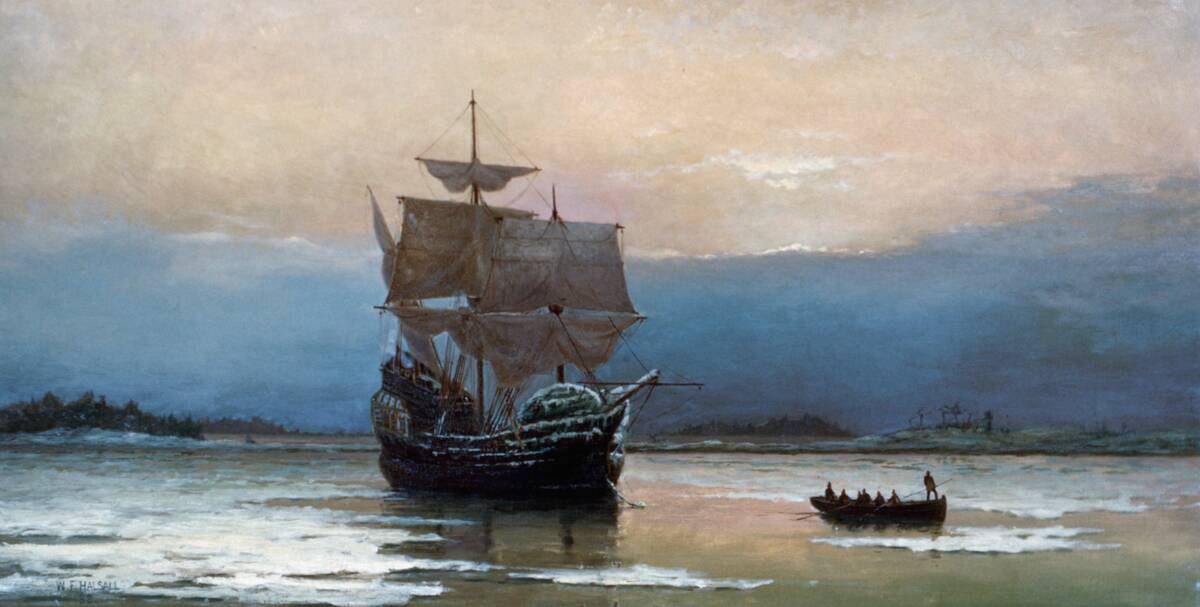
The pilgrims left England and traveled to Plymouth Rock on the Mayflower. Their journey across the Atlantic Ocean lasted 66 days, beginning on September 6, 1620 and finishing on November 9.
What was the purpose of the Mayflower Compact?
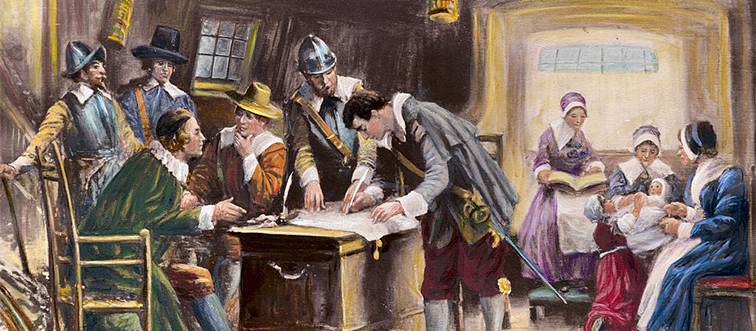
A. It was written as an escape plan back to England.
B. It served as a written set of rules the Plymouth colonists agreed to follow.
C. It was for colonists to tell the people they left behind in England that they arrived.
D. It was a contract to return the Mayflower once they arrived.
Answer: It served as a written set of rules the Plymouth colonists agreed to follow.
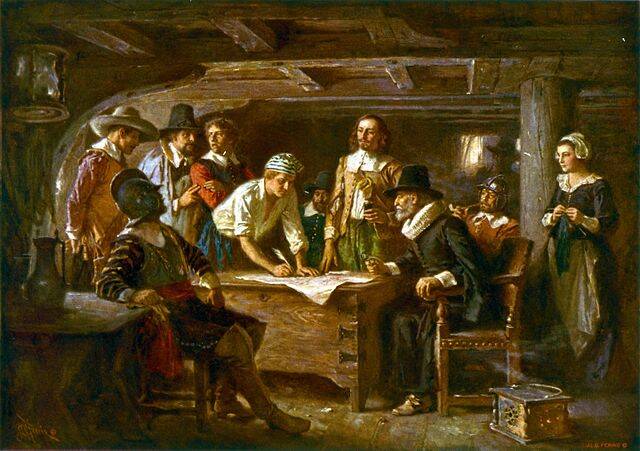
The Mayflower Compact served as a written set of rules for the Plymouth colonists to follow. Pilgrim leader William Bradford wanted to make sure the mix of Puritan and non-Puritans wouldn’t upset the natural order.
What was dumped in Boston Harbor in 1773?
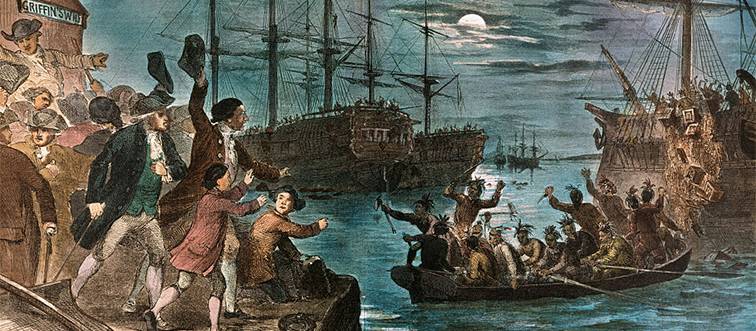
A. Shoes
B. Tea
C. Liquor
D. Pies
Answer: Tea
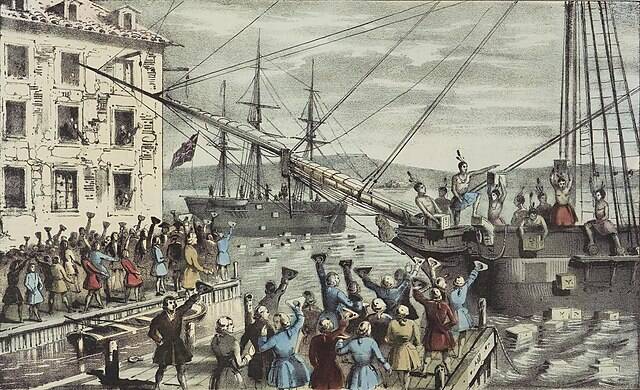
On December 16, 1773, colonists dressed up as Native Americans and dumped tea into the Boston Harbor. They were protesting the British East India company not paying taxes as stated in the Tea Act of 1773.
Who delivered the sermon Sinners in the Hands of an Angry God?
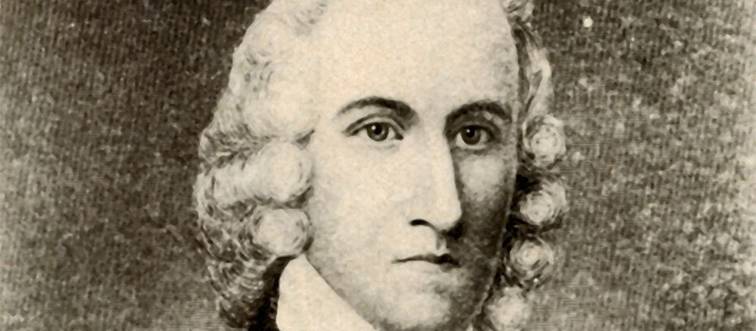
A. William Penn
B. John Smith
C. Jonathan Edwards
D. William Bradford
Answer: Jonathan Edwards
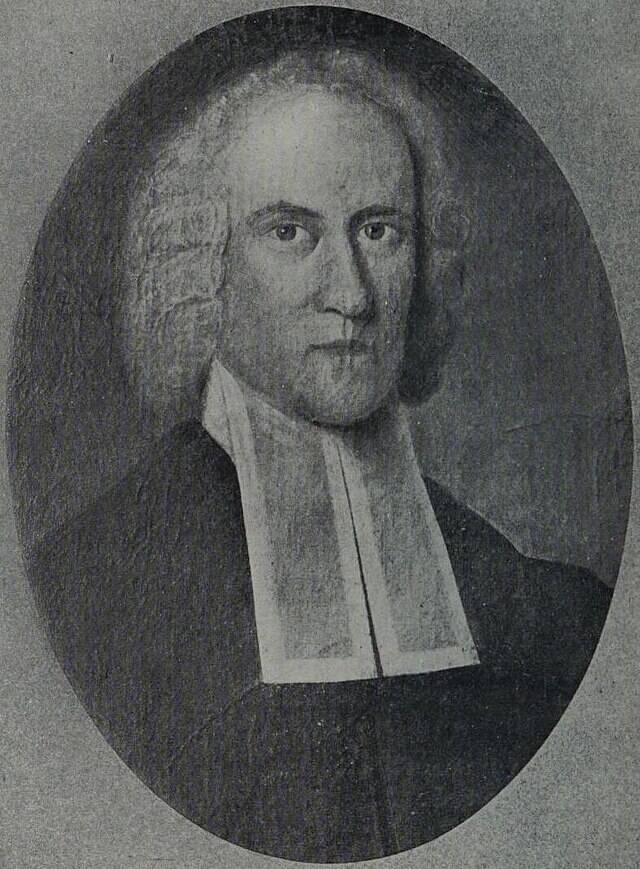
In 1734 Jonathan Edwards delivered the famous sermon Sinners in the Hands of an Angry God. This began the start of the Great Awakening, which was a time of religious revival.
Approximately how many people were accused during the Salem Witch Trials?
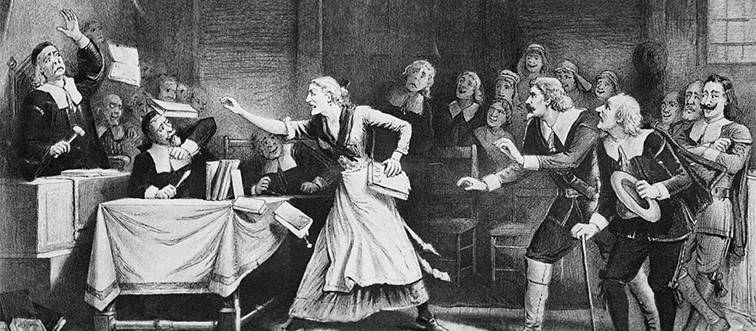
A. 1,000
B. 500
C. 20
D. 200
Answer: 200
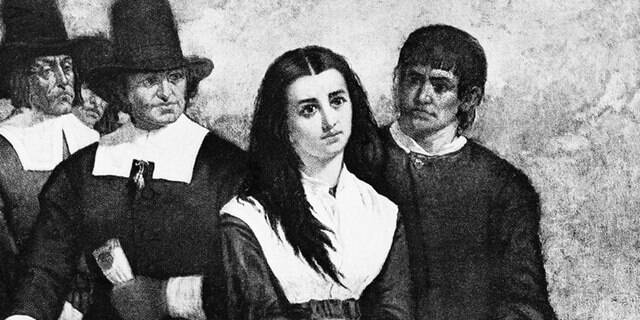
The Salem Witch Trials took place from 1692 to 1693 in Salem, Massachusetts. Over 200 people were accused of practicing witchcraft and 20 of them were executed. The paranoia of the supernatural actually began in Europe many years prior.
What was the name of the Native American tribe that joined the pilgrims during the first Thanksgiving?
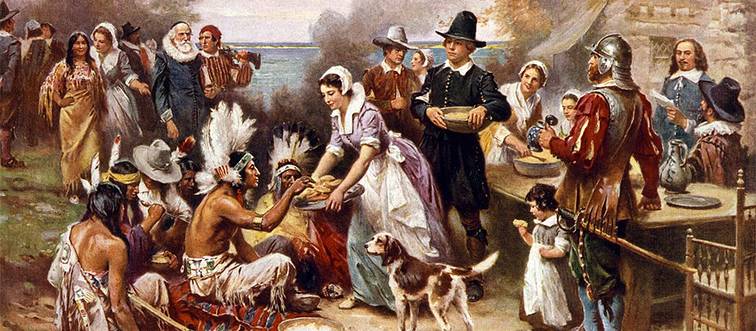
A. Wampanoag
B. Cheyenne
C. Navajo
D. Cherokee
Answer: Wampanoag
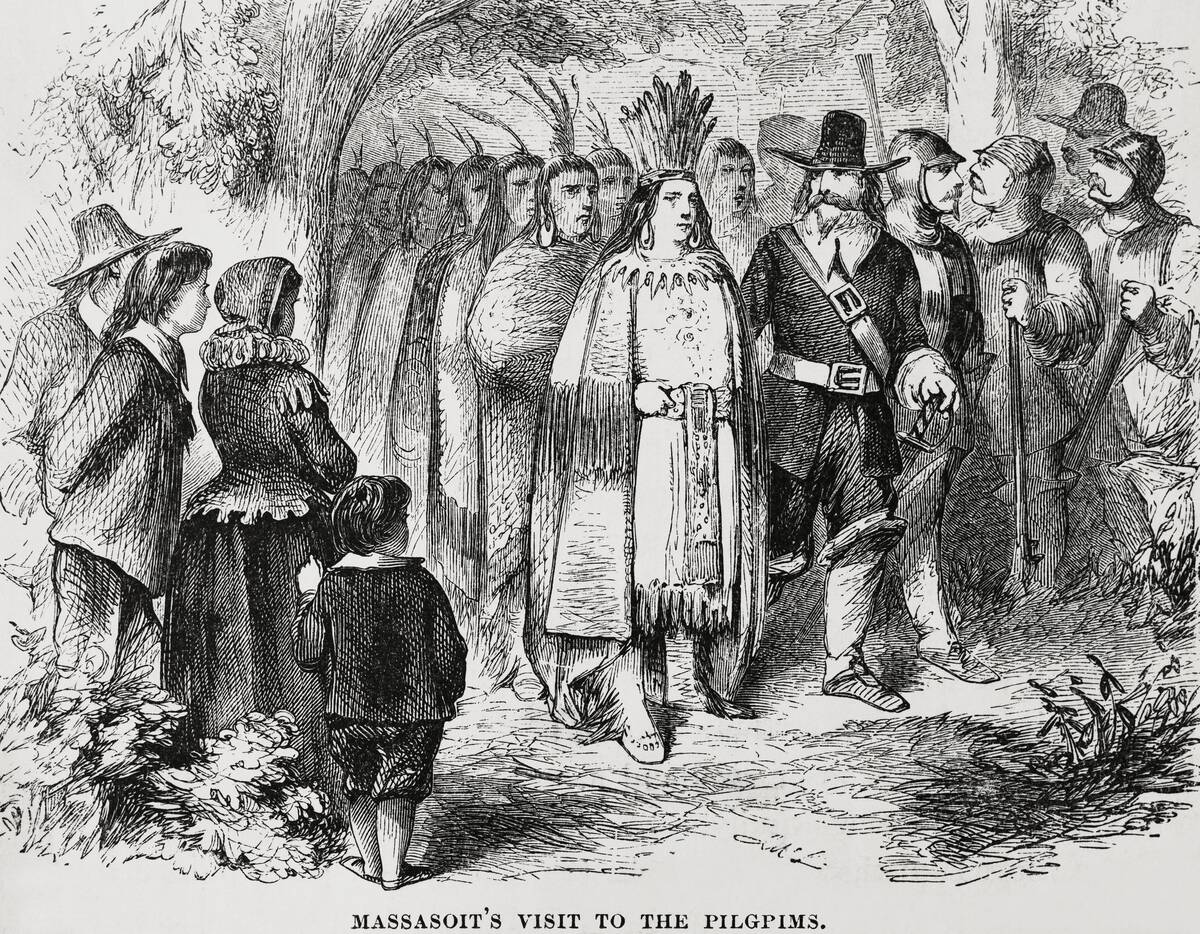
The very first Thanksgiving celebration took place in 1621 as a three-day harvest. About 50 pilgrims and 90 people of the Wampanoag tribe were in attendance. Most historians believe only five women were there.
What were the primary crops of South Carolina?

A. Corn and carrots
B. Rice and indigo
C. Cotton and squash
D. Beans and tomatoes
Answer: Rice and indigo
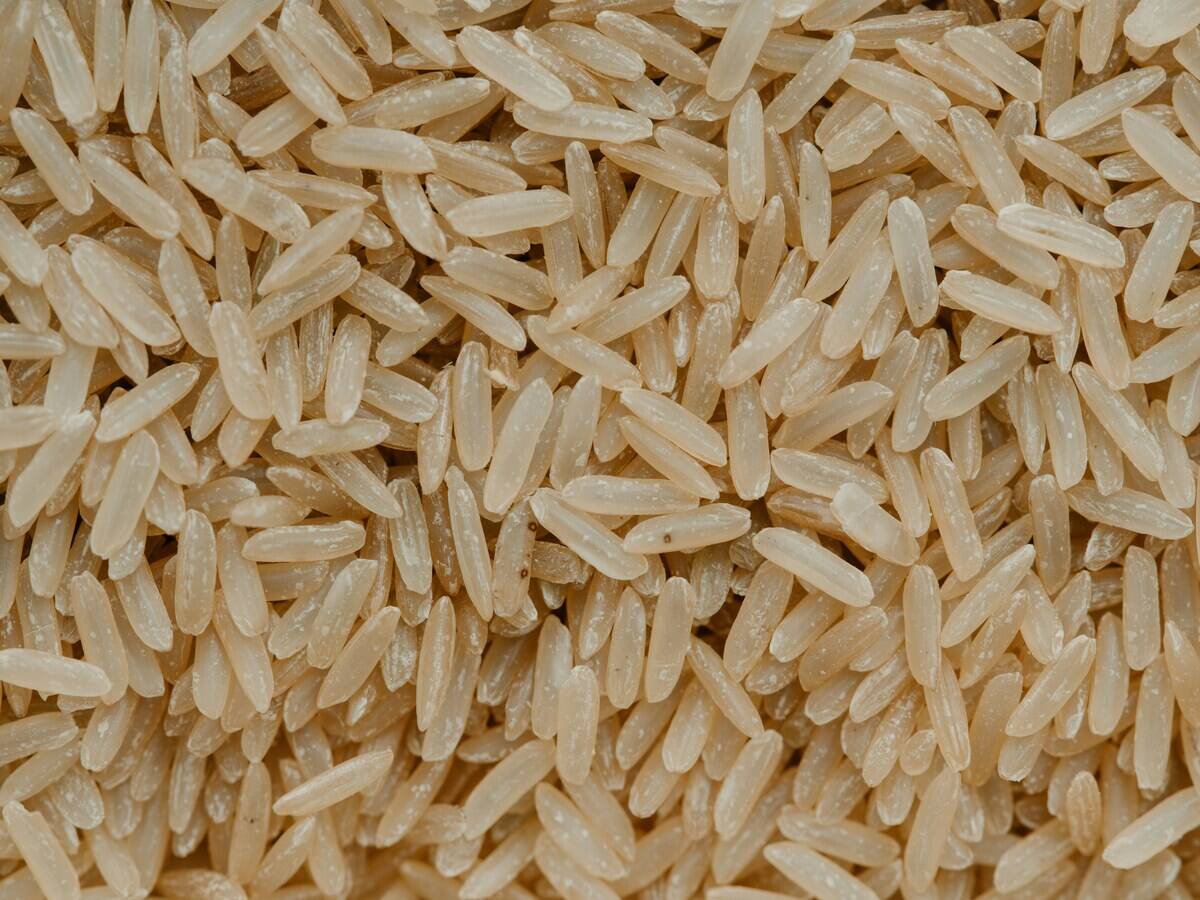
Those who needed crops from South Carolina during the age of colonial America would mostly find rice and indigo. The same was true in Georgia. Other cash crops of the time included cotton and tobacco.
Which of these is true about Pocahontas?
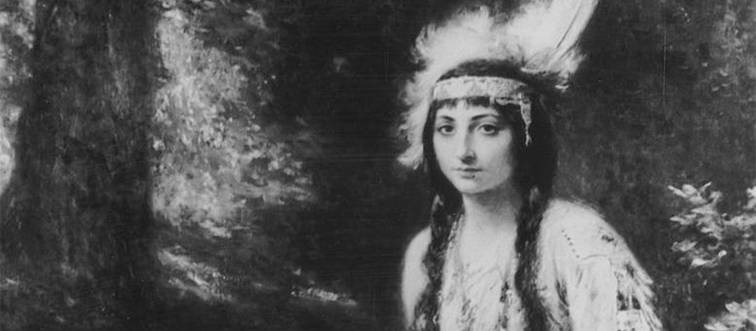
A. She married John Smith.
B. She helped lead the Jamestown settlement.
C. She changed her name to Rebecca.
D. She had a daughter.
Answer: She changed her name to Rebecca.
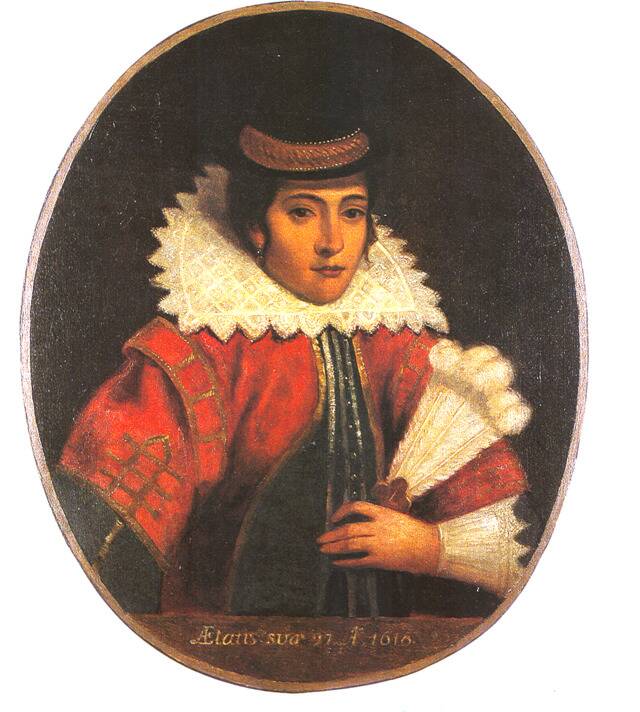
Pocahontas is best known for sacrificing her life to save Jamestown’s leader, John Smith. Although the Disney portrayal has them in a romantic relationship, she actually married a tobacco farmer named John Rolfe. When she moved to England she was baptized and changed her name to Rebecca.
Which colony was the birthplace of the Quakers?
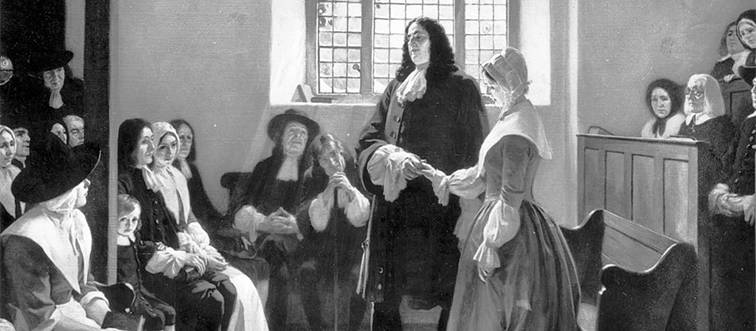
A. Maryland
B. Rhode Island
C. Delaware
D. Pennsylvania
Answer: Pennsylvania
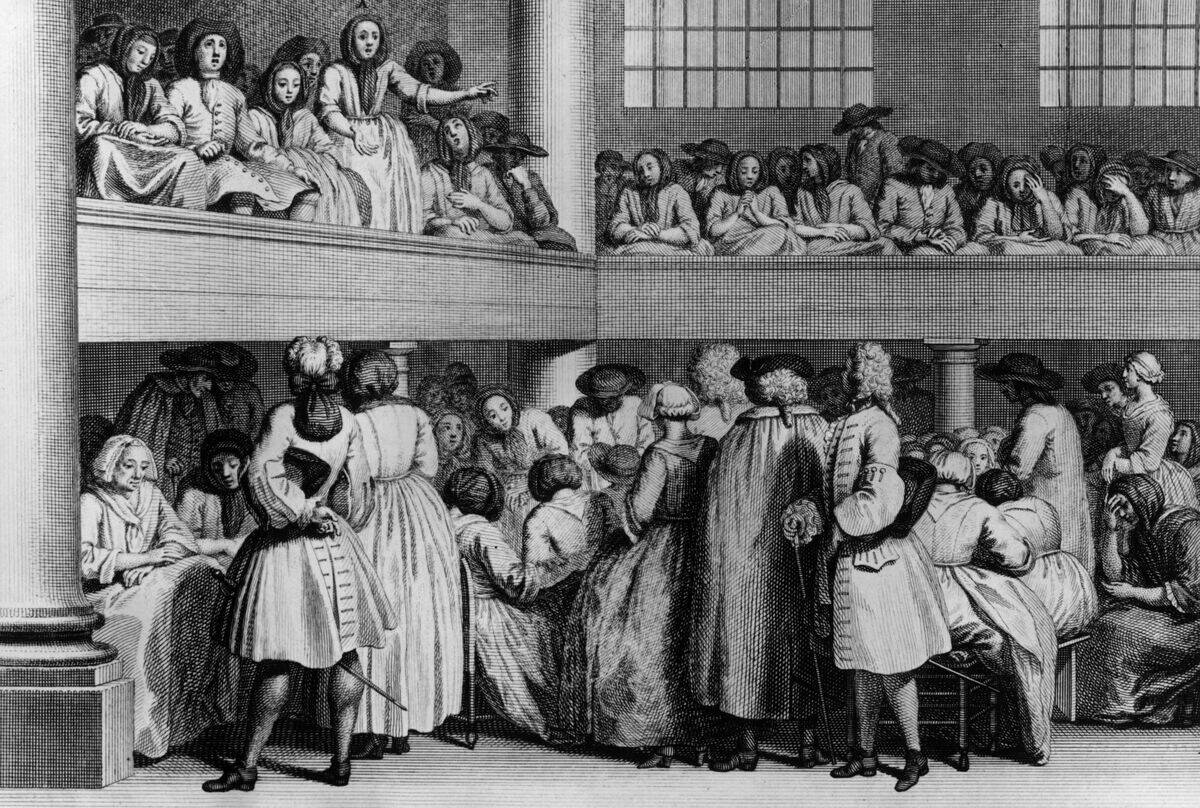
Pennsylvania was established in 1681 by William Penn. He also was an early member of the Religious Society of Friends, also known as Quakers, who mostly gathered in that colony.
Which of these is NOT one of the types of English colonies?
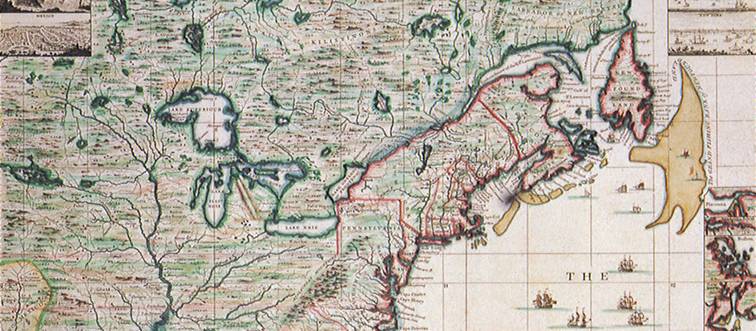
A. Judicial
B. Proprietary
C. Royal
D. Covenant
Answer: Judicial
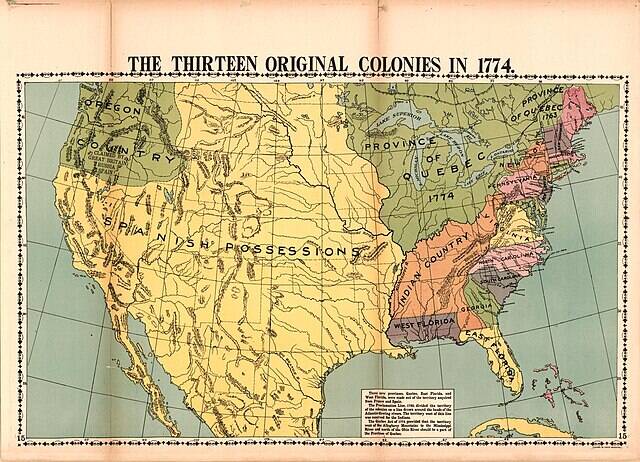
During the time when America was made up of 13 colonies, they fell under four different categories including joint-stock company, proprietary, royal, and covenant. This meant they were either owned by private investors, individuals, members of the monarchy, or governed by settlers.
How did Puritans differ from Separatists?
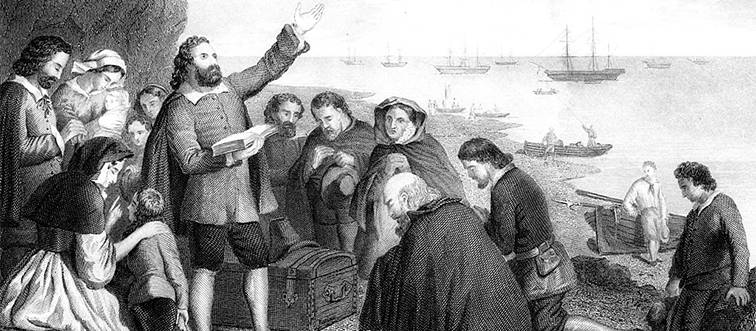
A. Puritans wanted to stay under British monarchy and Separatists didn’t.
B. Puritans only settled in Massachusetts Bay and Separatists settled in Chesapeake.
C. Puritans wanted to purify the Church of England and Separatists wanted to separate from it entirely.
D. Puritans wanted to have one leader and Separatists didn’t want anyone leading.
Answer: Puritans wanted to purify the Church of England and Separatists wanted to separate from it entirely.
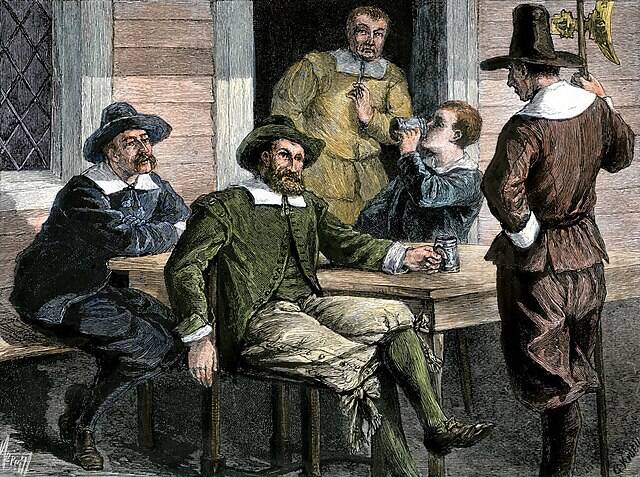
The main difference between Puritans and Separatists was that Puritans still wanted to practice religion and purify the Church of England. Separatists did not want to have any affiliation with the Church of England.
What was the most common job for people living in colonial America?
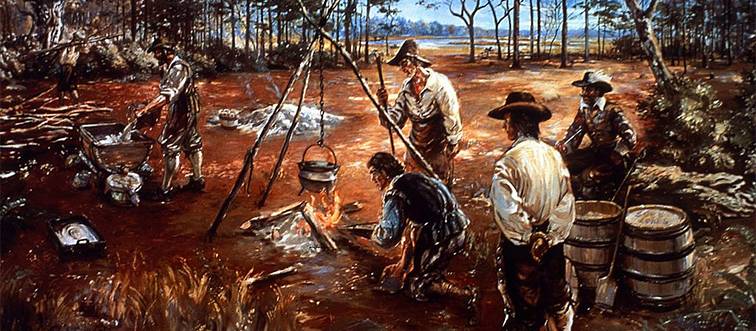
A. Hunter
B. Baker
C. Doctor
D. Farmer
Answer: Farmer
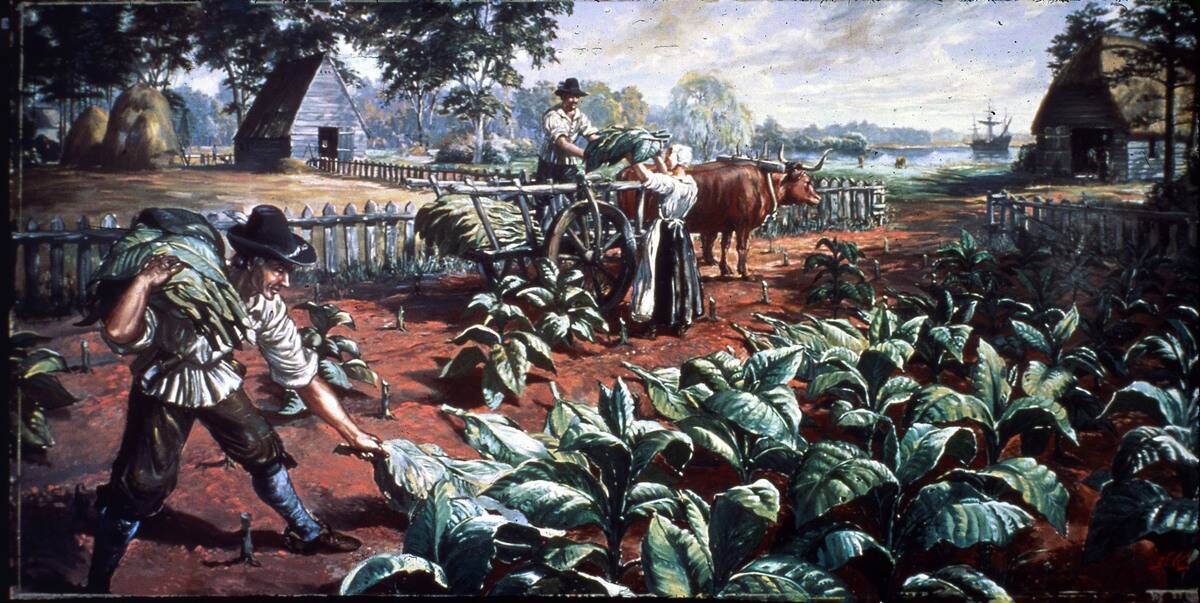
There were plenty of occupation options during the days of colonial America, but the most prevalent was farming. Other popular jobs included making medicine, furniture, shoes, candles, clothes, and wheels.
Which colony gave full religious freedom to all settlers?
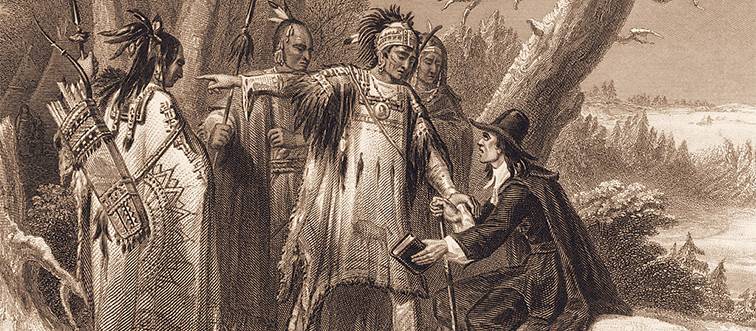
A. Rhode Island
B. Virginia
C. Massachusetts
D. North Carolina
Answer: Rhode Island
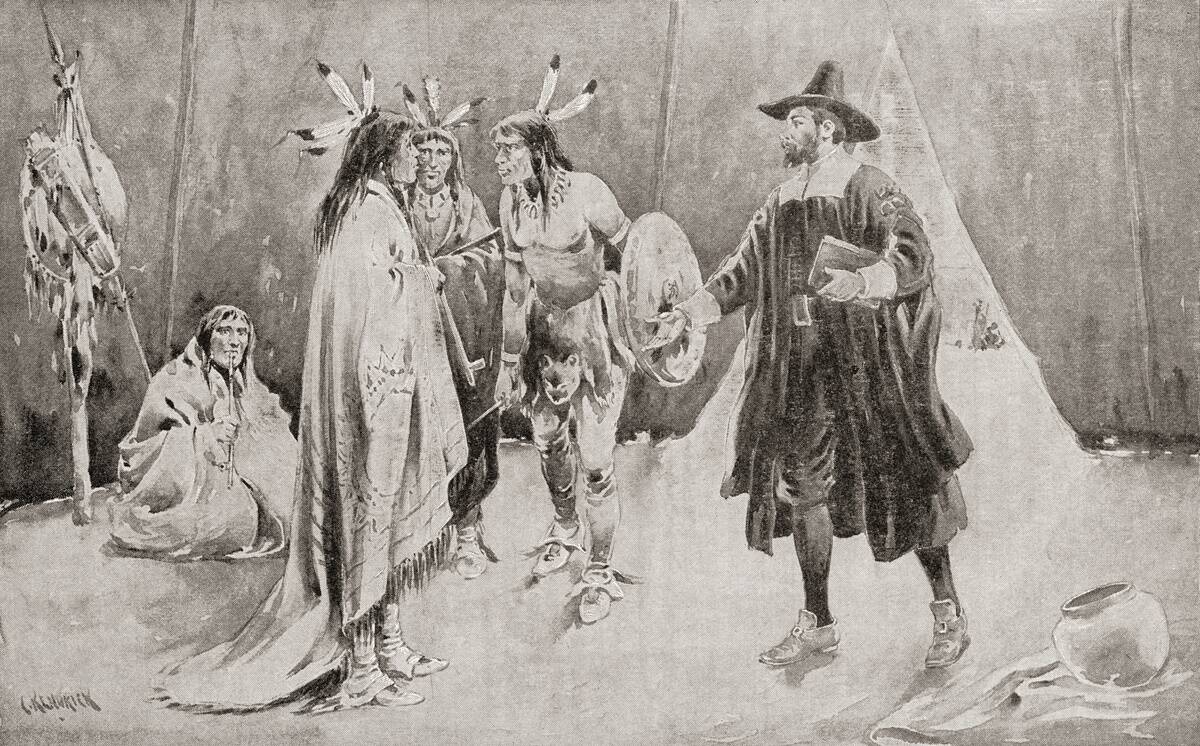
Roger Williams founded the colony of Rhode Island in 1636 with a promise of religious and economic freedom. Many refugees from Massachusetts Bay came there to escape religious tyranny and live in a more liberal area.
What was the major cause of conflict between the early settlers and Native Americans?
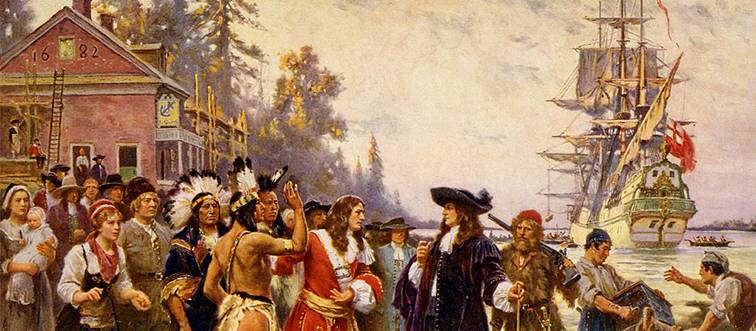
A. Food
B. Land
C. Religion
D. Taxes
Answer: Land
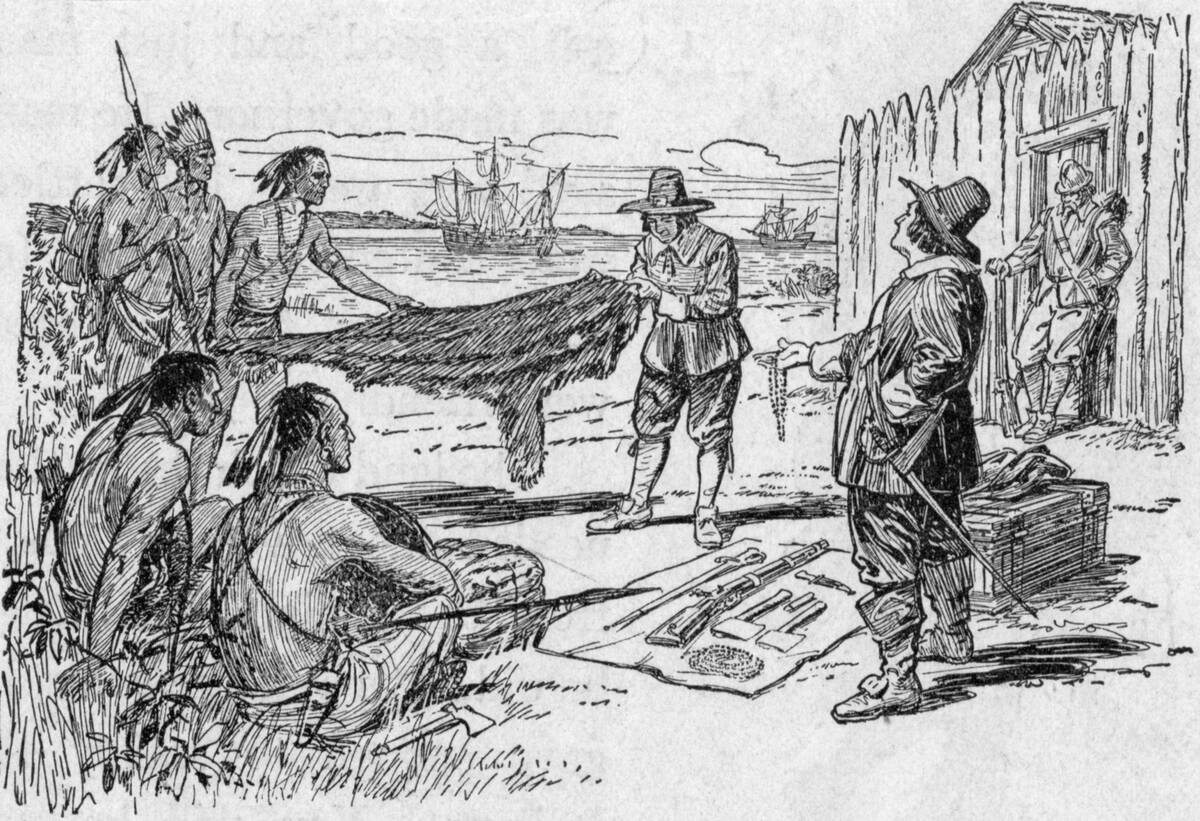
The largest dispute between the settlers and Native Americans was over land. The settlers wanted to claim it as their own and made sure the Native Americans found somewhere else to live.
Which of these items was NOT taxed by the Parliament of Great Britain?
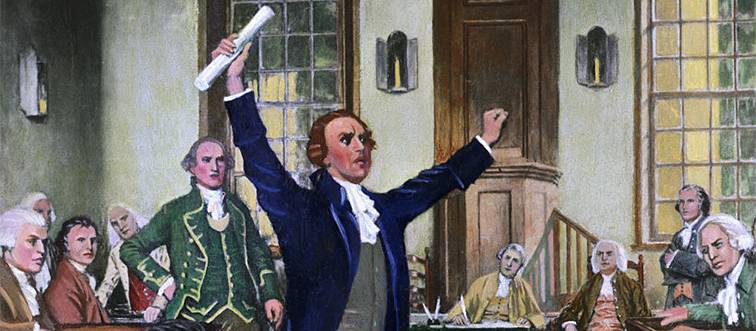
A. Stamps
B. Sugar
C. Wigs
D. Tea
Answer: Wigs
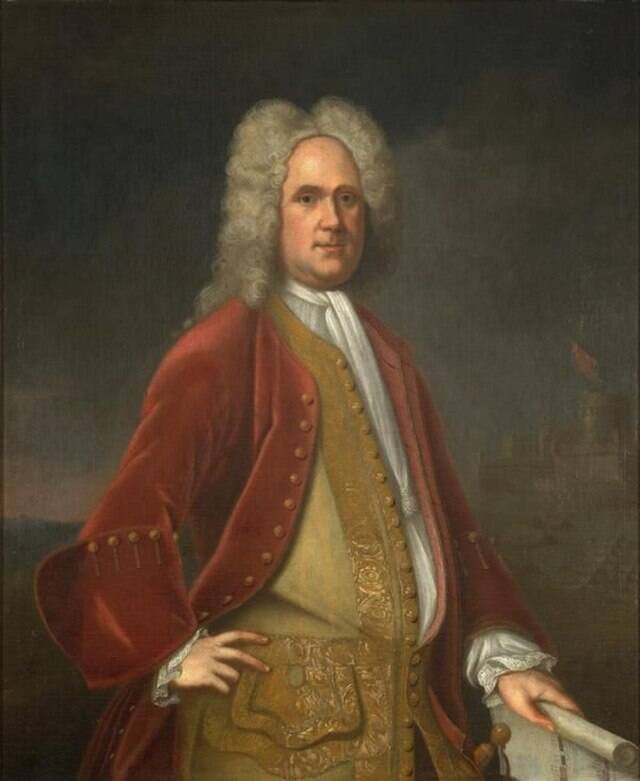
One of the main issues that led to the American Revolution was whether or not the British Parliament had the right to tax Americans on things such as stamps, sugar, and tea.
Which of these wasn’t a rule in Connecticut?
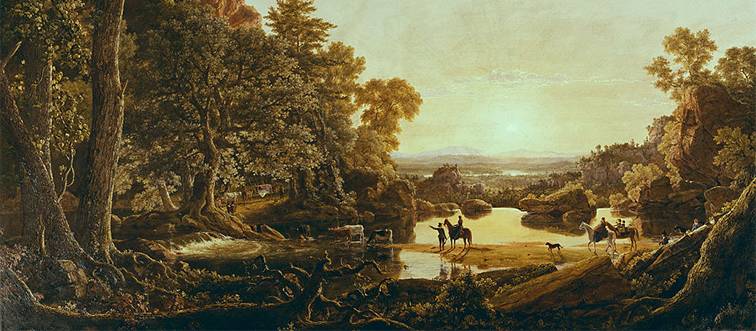
A. “No one to cross a river, but with an authorized ferryman.”
B. “To pick an ear of corn growing in a neighbor’s garden, shall be deemed theft.”
C. “Every male shall have his hair cut round according to a cap.”
D. “Only speak to a Priest if spoken to first.”
Answer: “Only speak to a Priest if spoken to first.”
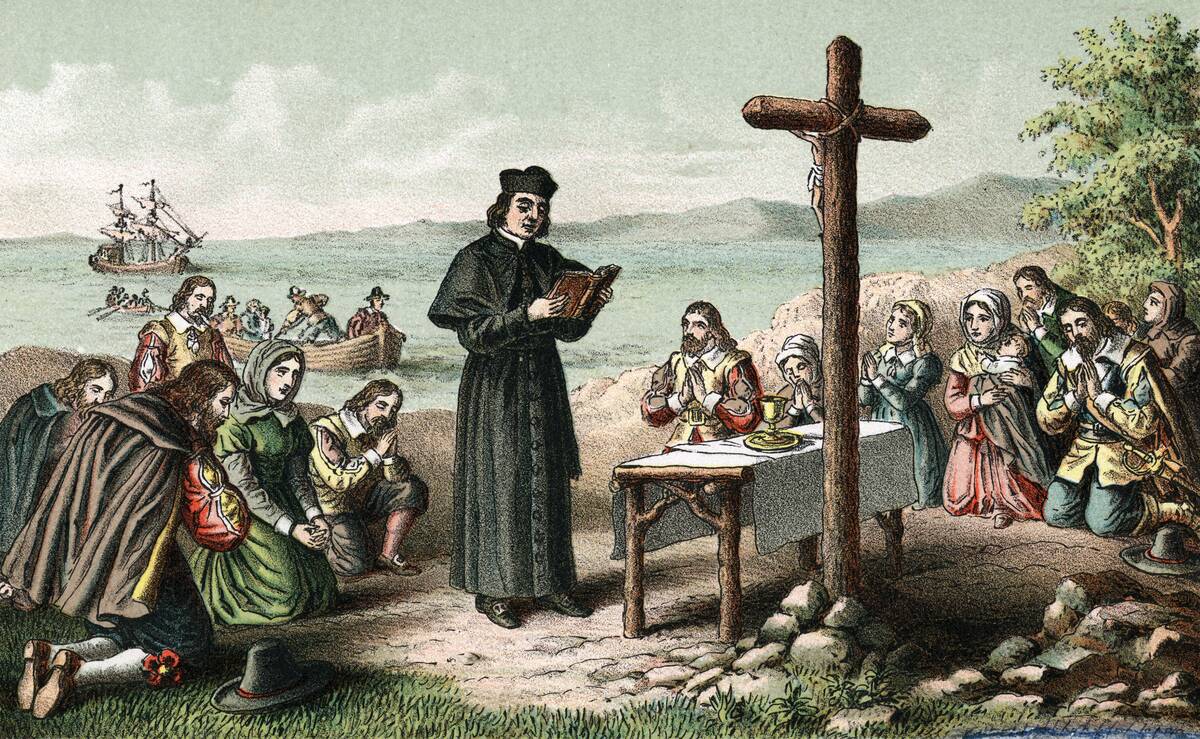
Shortly before the Revolutionary War, the Reverend Samuel Peters made up 45 rules for Puritans in Connecticut to follow. These rules are now referred to as the Blue Laws and were published in his book called A General History of Connecticut.
Which colony was founded by James Oglethorpe?
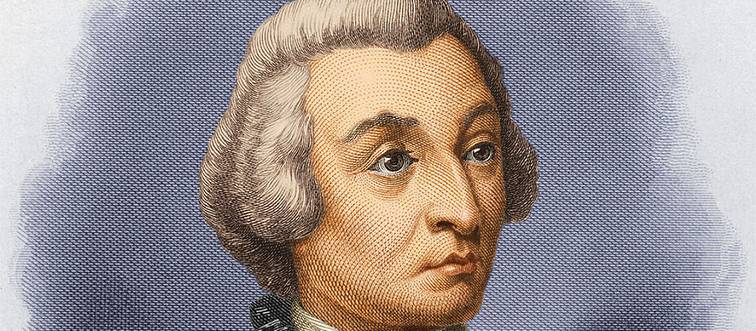
A. Georgia
B. New Jersey
C. New Hampshire
D. Maryland
Answer: Georgia
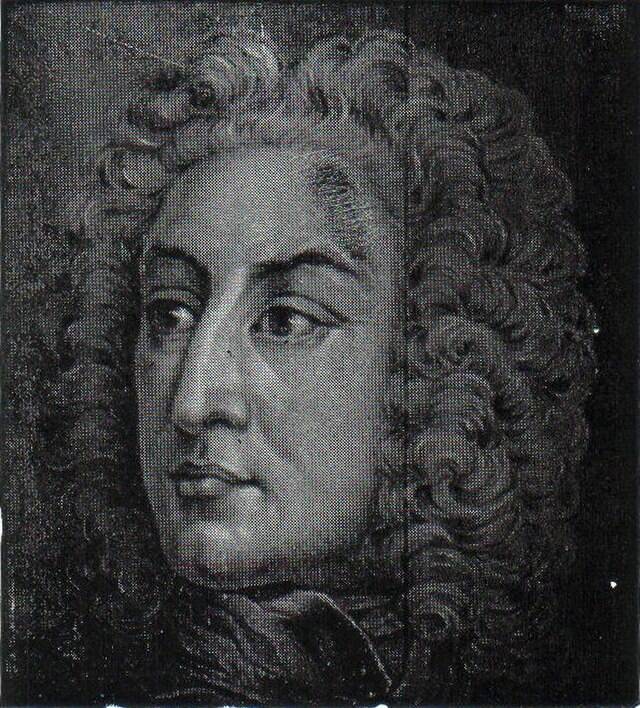
James Oglethorpe was a British soldier and a Member of Parliament who founded the last of the original 13 colonies in Georgia. He did so in hopes to help those in debtors’ prisons.
Why was Anne Hutchinson banished from Massachusetts Bay?
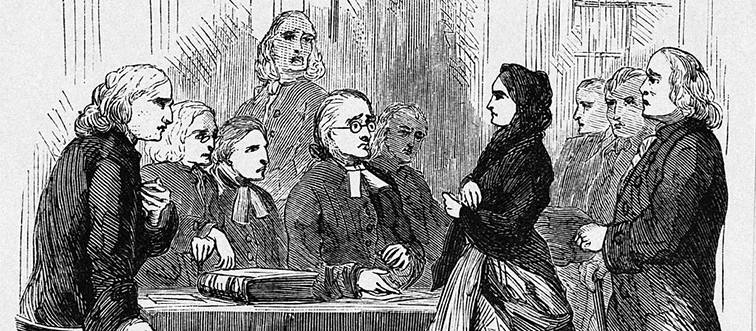
A. She practiced witchcraft.
B. She questioned religion.
C. She had a baby out of wedlock.
D. She stole food from her neighbors.
Answer: She questioned religion.
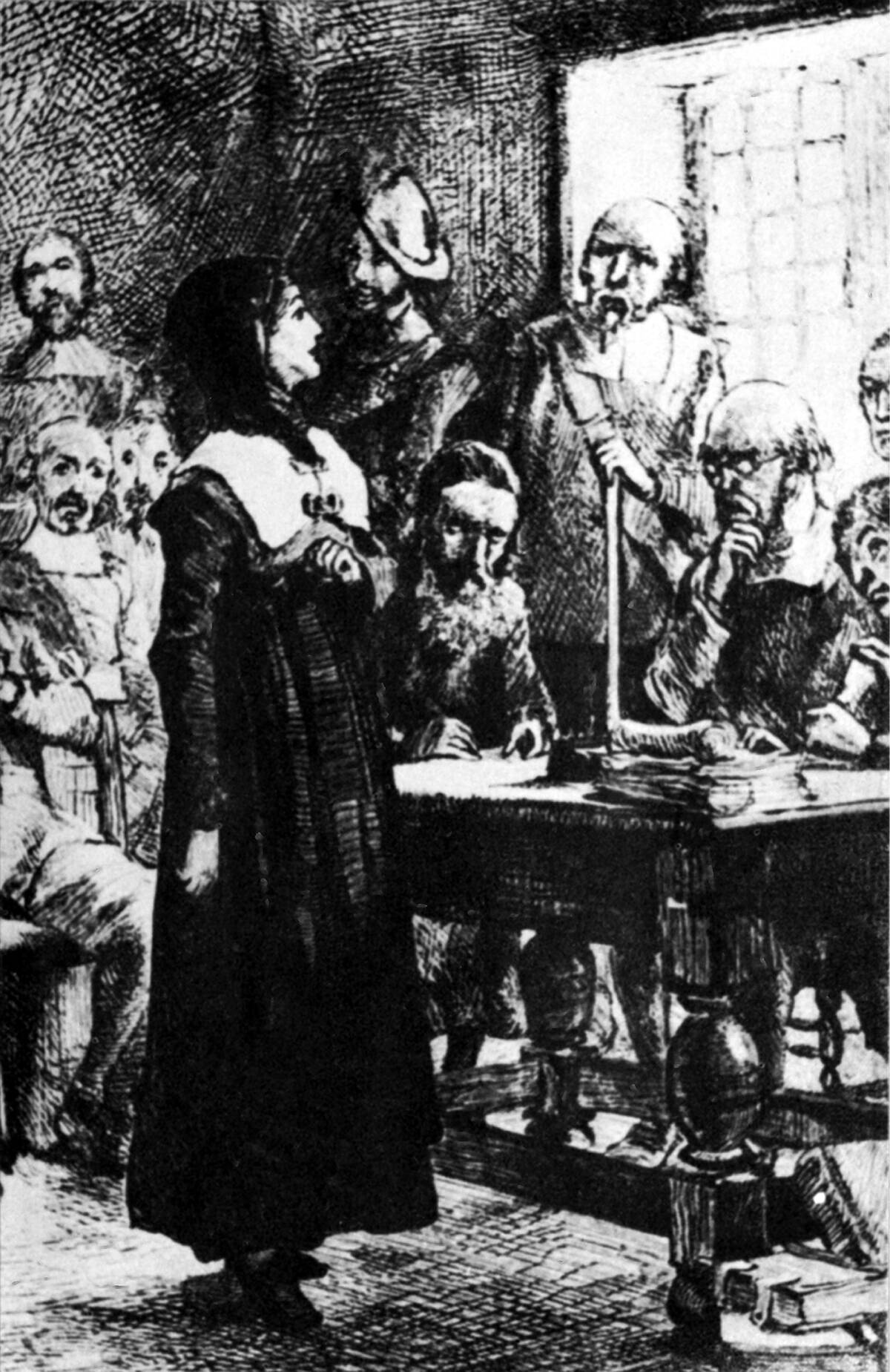
When Anne Hutchinson was growing up, her father taught her to question the teachings of the Church of England. When she arrived in Massachusetts Bay she shared her opposing opinions of religion with the public. This led to her being excommunicated from the Church of Boston.
Sugar, rice, and cotton are examples of what kind of materials?
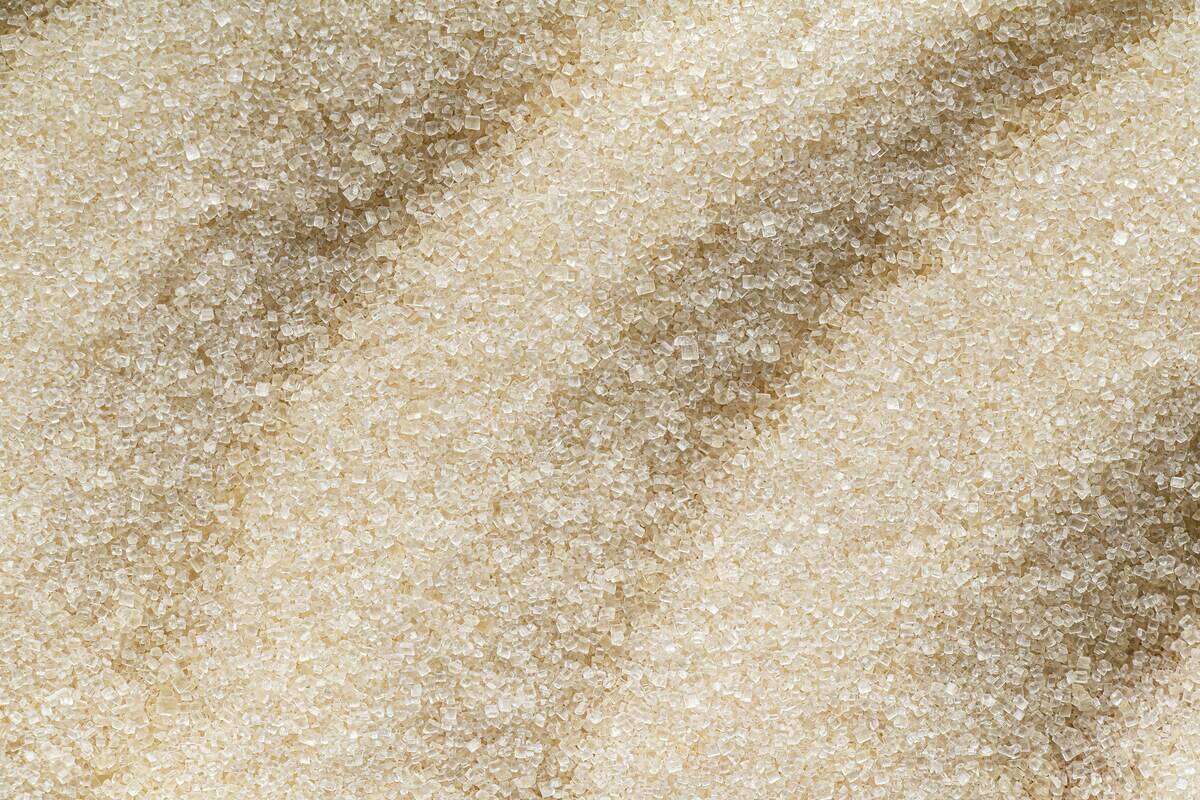
A. Plant
B. Farm
C. Raw
D. Seed
Answer: Raw
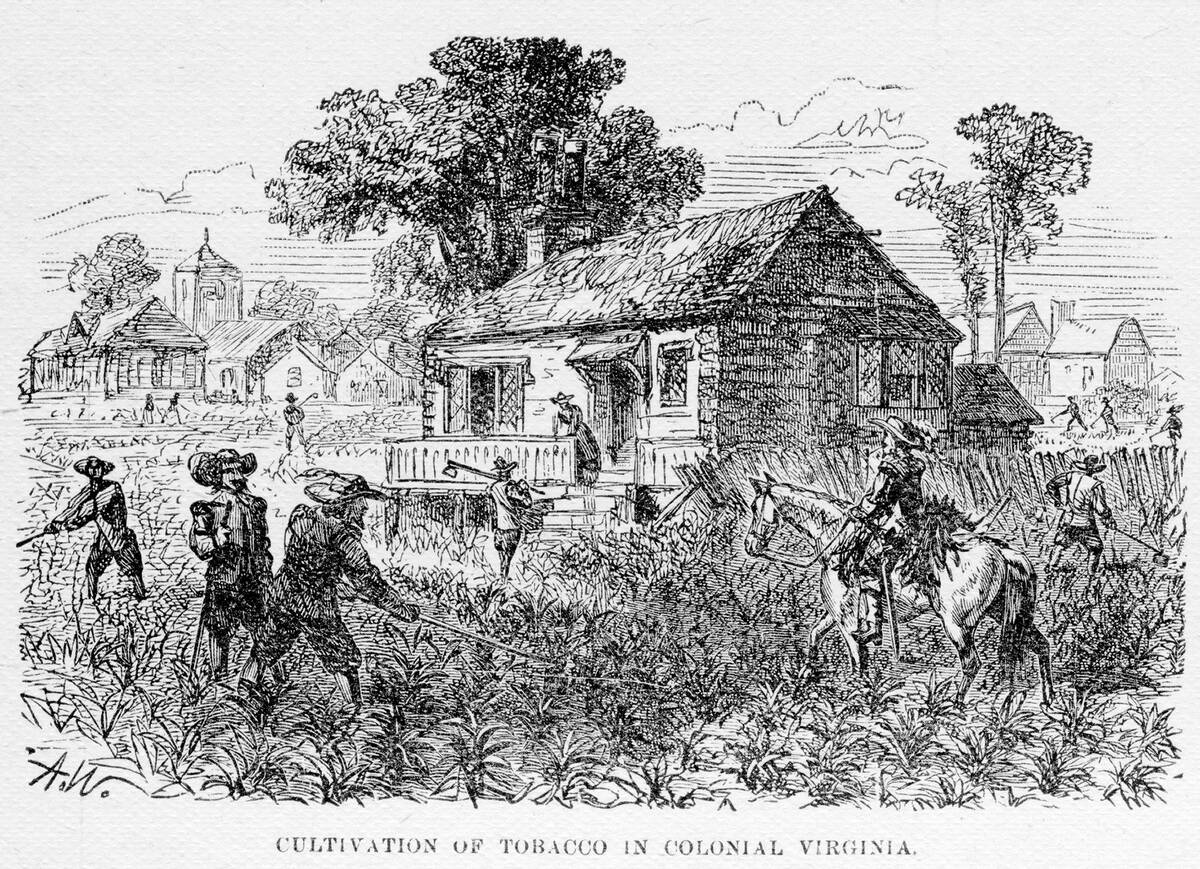
Things that colonists would grow on their farms such as sugar, rice, cotton, sugar, and tobacco are examples of raw materials. The raw materials were then shipped to England and returned as manufactured goods.
What year was the Declaration of Independence signed?
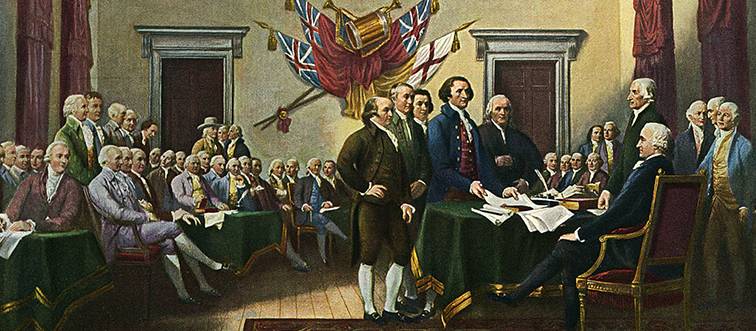
A. 1800
B. 1734
C. 1666
D. 1776
Answer: 1776
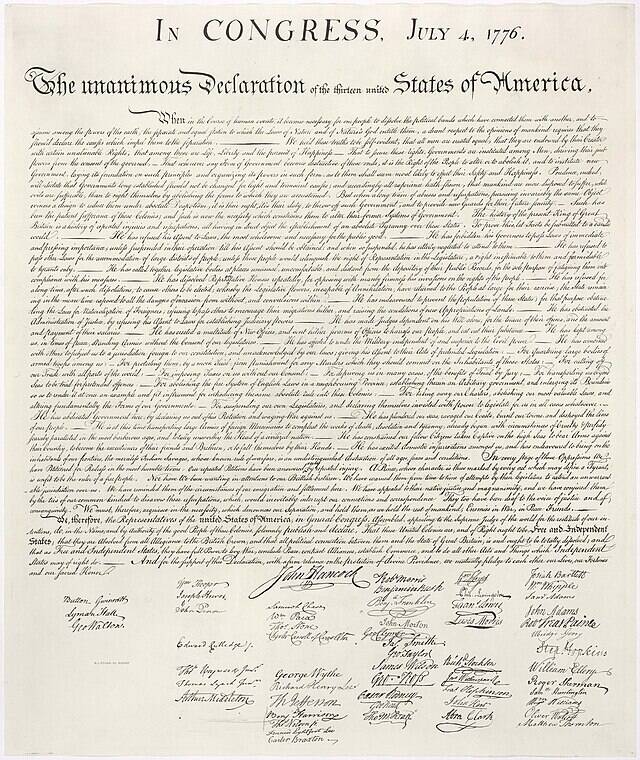
The Declaration of Independence was signed on July 4, 1776, by the Second Continental Congress in Philadelphia, Pennsylvania. Some of its authors included Benjamin Franklin, John Adams, and Thomas Jefferson.
Which of these colonies was settled first?

A. Roanoke
B. Jamestown
C. New York
D. Plymouth
Answer: Roanoke
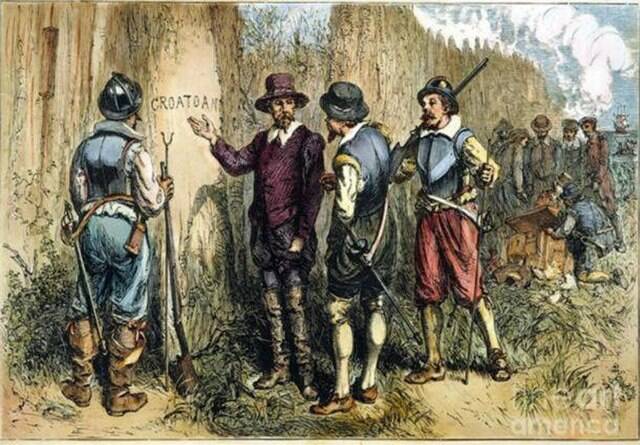
Roanoke is also known as the “lost colony,” and was settled in 1585, a whole two decades before Jamestown. However, historians are still unsure what happened to its people as the whole colony vanished.
What was the main reason the Jamestown colony was established?
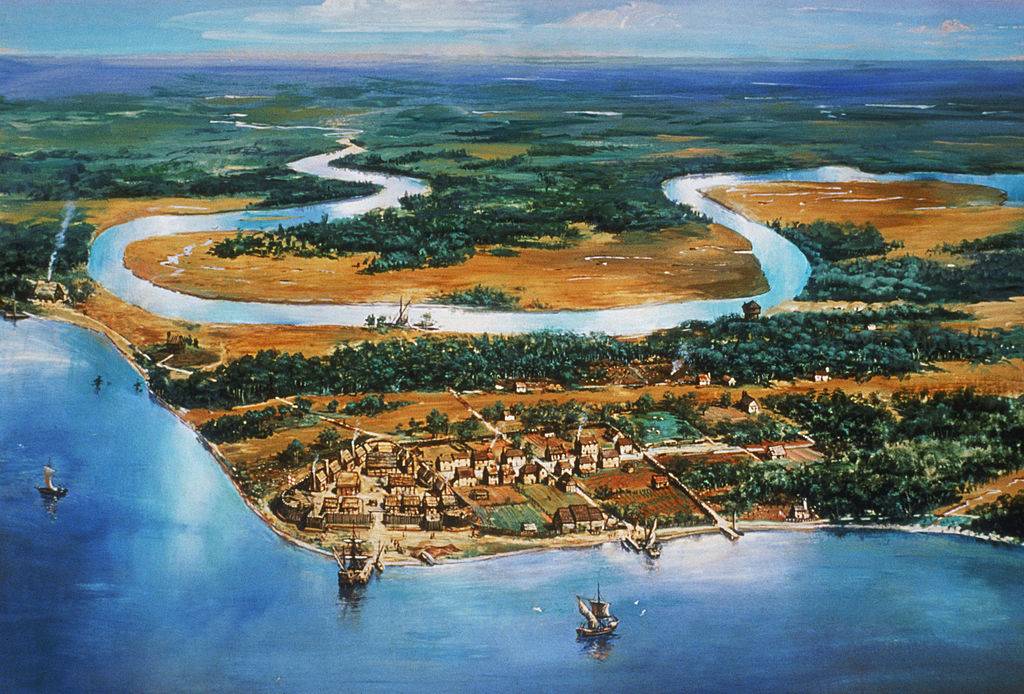
A. Religious freedom
B. Profit for European investors
C. To fight the Native Americans
D. To grow corn
Answer: Profit for European investors
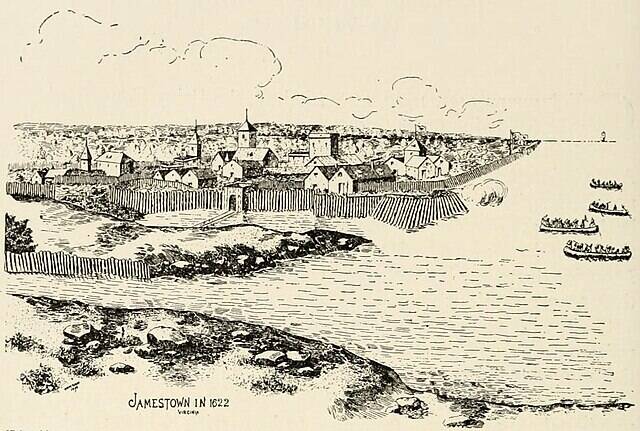
Before Jamestown was settled, many wealthy Europeans invested in the Virginia Company to get the colony up and running, in hopes that the company would be profitable if it found gold, silver, etc.
Which crop led to the success of the Jamestown colony?
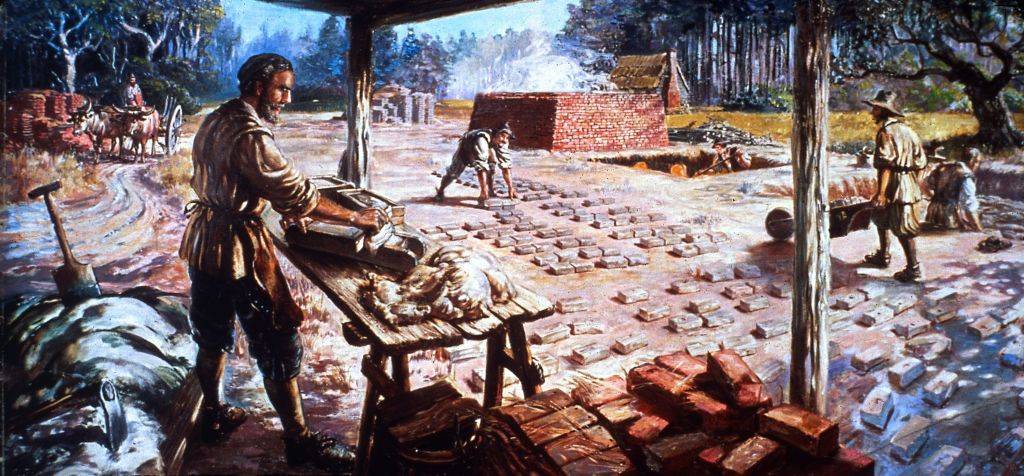
A. Corn
B. Barley
C. Tobacco
D. Sugar
Answer: Tobacco
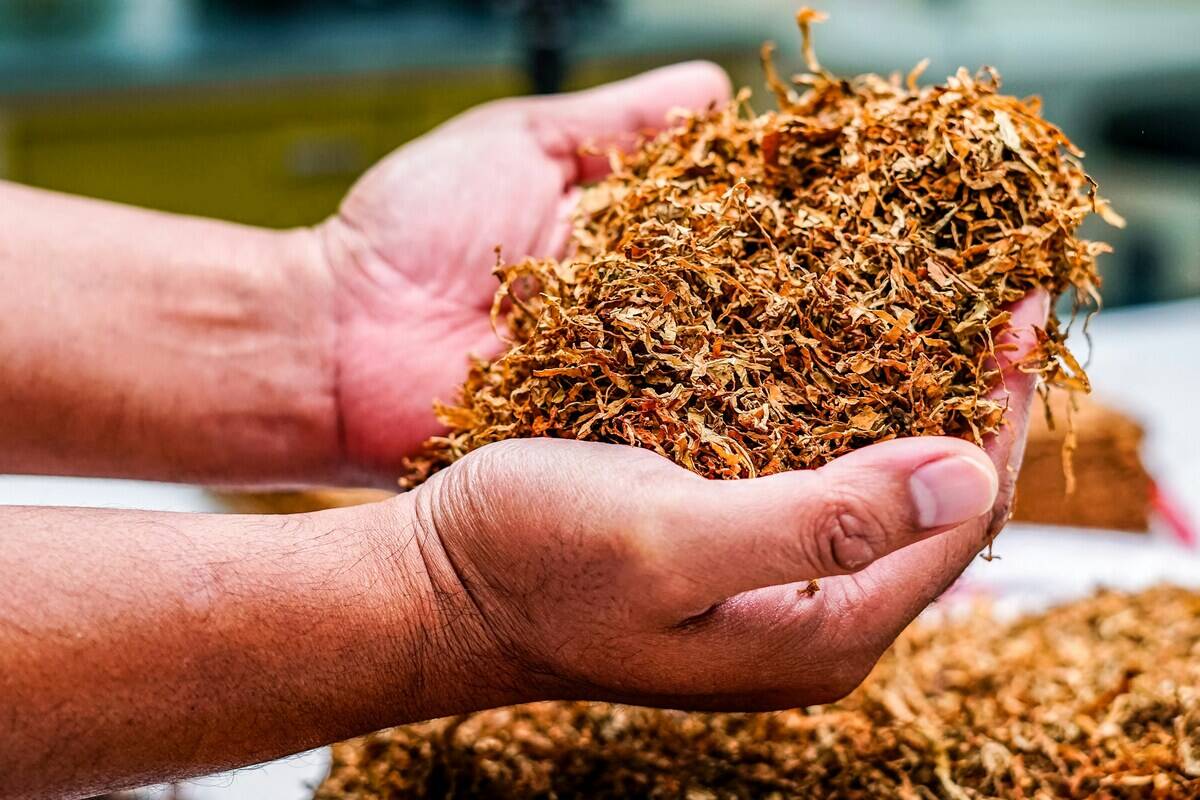
In the beginning, Jamestown had a hard go at things. On top of their already high mortality rates, their early crops began to fail. However, it turned profitable when they began to produce tobacco.
The House of Burgesses was an early example of what?
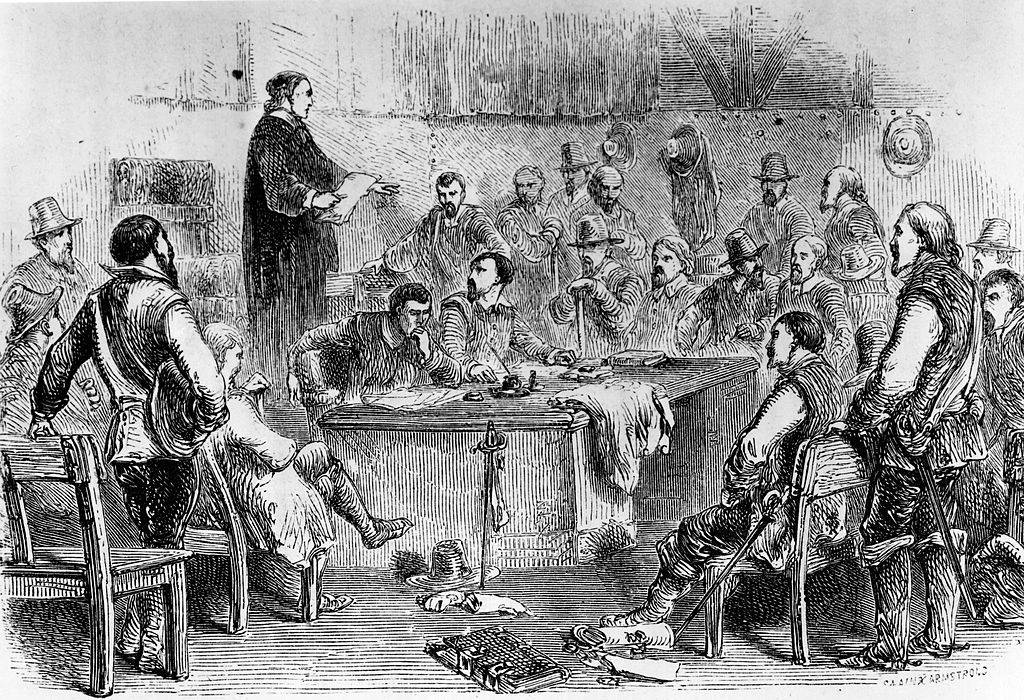
A. Representative government
B. A monarch
C. Laws
D. The courts system
Answer: Representative government
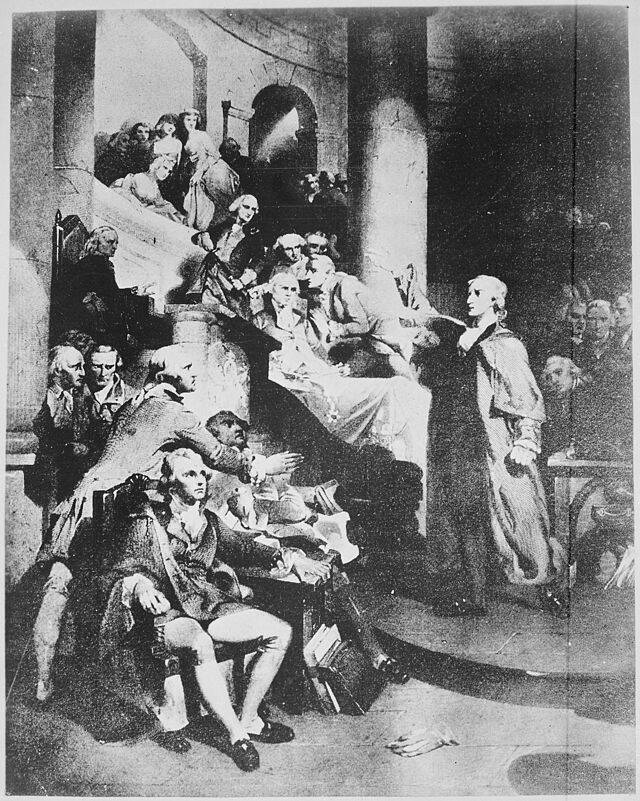
Established in Virginia, the House of Burgesses was Virginia’s colonial legislature. The members were voted in by the settlers to represent the people as a whole. It was one of the systems of government in the New World.
What was the cause of Pontiac’s Rebellion?
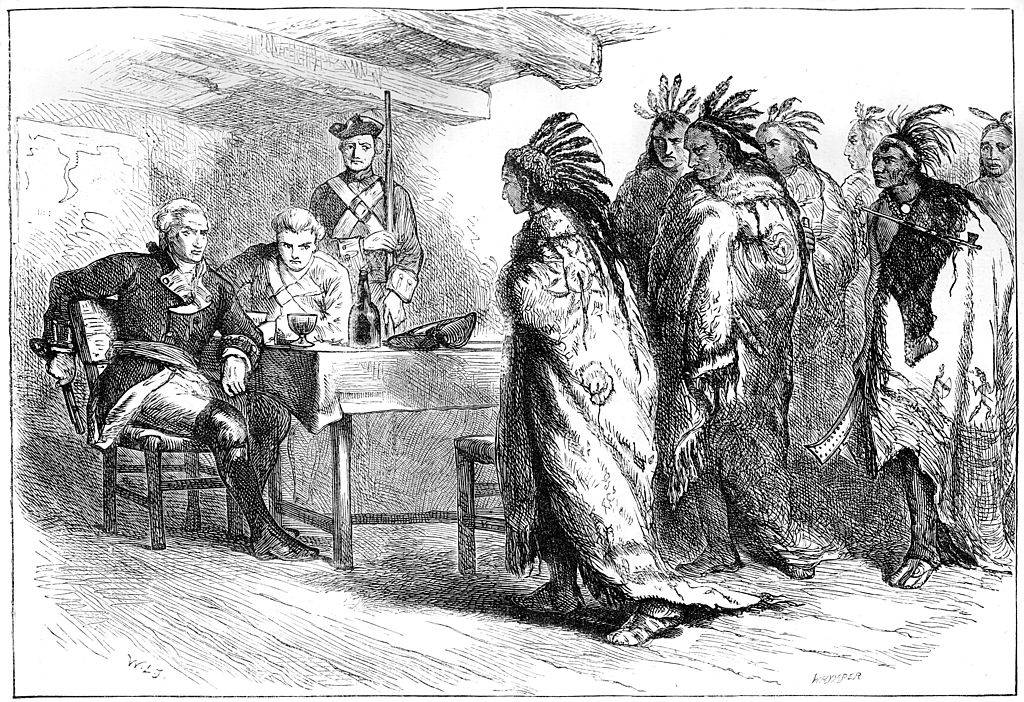
A. The ending of the French and Indian War
B. The French went back on their word
C. British colonists settled land promised to the Native Americans
D. Their chief was killed
Answer: British colonists settled land promised to the Native Americans
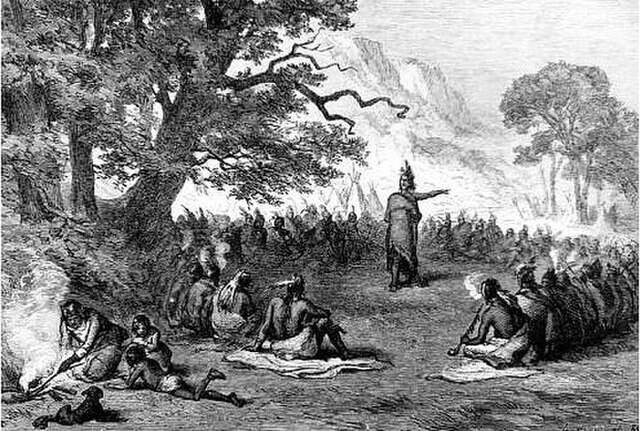
After promising not to settle the land of the Native Americans, the British promptly went back on their word. This led Pontiac to assemble several tribes and fight to reclaim it.




